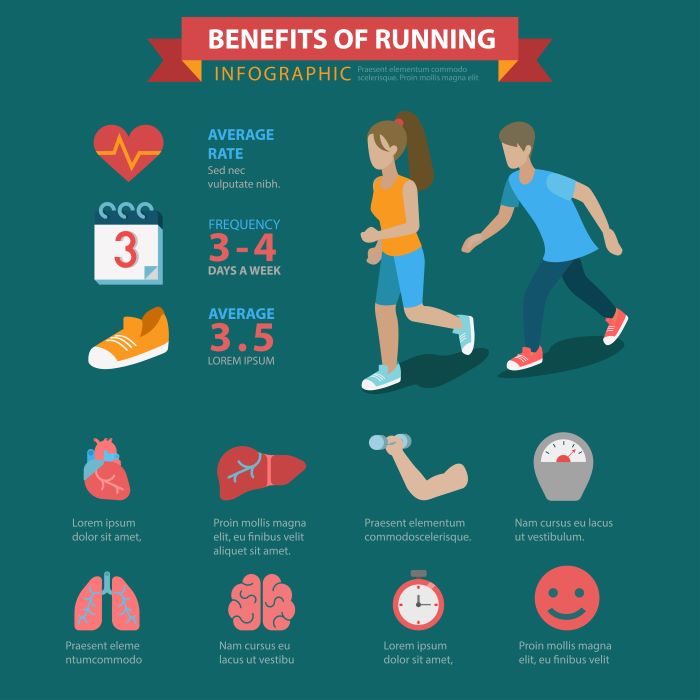Running is not just a simple act of putting one foot in front of the other; it encompasses various running activities that can significantly enhance your health and fitness. Understanding these activities is pivotal for anyone looking to embrace the joy of running and its myriad benefits.
At its core, running activities can be categorized into several types, including:
- Road Running: Typically performed on paved surfaces, this type is great for building speed and endurance.
- Trail Running: Engaging with nature, trail running offers variable terrain that challenges your body while providing mental rejuvenation.
- Track Running: Ideal for speed training and interval workouts, it allows runners to focus on pace and timing.
- Fun Runs: Usually short distances, these events are fun and community-oriented, promoting social interaction.
The impact of these activities on your health is profound. Regular running can lead to improvements in cardiovascular fitness, weight management, and mental well-being. Notably, running releases endorphins, which are natural mood lifters, helping to combat stress and anxiety.
To truly embrace running, it’s essential to find the right activity that resonates with you. Whether you’re a seasoned runner or a newbie, integrating various types of running activities can keep your routine exciting and effective. Visit our website to learn more and get started today! Click here.
Health Benefits of Engaging in Running Activities

Engaging in running activities offers an array of health benefits that extend far beyond just physical fitness. As a low-cost and accessible form of exercise, running is an excellent way to improve your overall well-being.
One of the most significant benefits is enhanced cardiovascular health. Regular running strengthens the heart muscle, improving blood circulation and reducing the risk of heart disease. Additionally, running can help lower blood pressure and cholesterol levels, contributing to a healthier cardiovascular system.
Moreover, running is a powerful ally in weight management. It burns a high number of calories, making it easier to maintain or lose weight when combined with a balanced diet. Studies have shown that individuals who run regularly tend to have lower body fat percentages, which can enhance overall body composition.
Another noteworthy benefit is the impact of running on mental health. The act of running stimulates the release of endorphins, often referred to as the body’s natural painkillers. This release can lead to a phenomenon known as the “runner’s high,” resulting in feelings of euphoria and reduced symptoms of anxiety and depression.
Additionally, running can improve sleep quality. Regular physical activity is known to help people fall asleep faster and enjoy deeper sleep, which is crucial for recovery and overall health. With all these benefits, incorporating running into your daily routine can be a transformative step towards a healthier lifestyle.
Types of Running Activities for Fitness Improvement

When it comes to improving fitness through running, there are various types of running activities that cater to different goals and preferences. Understanding these options can help you choose the best routine for your fitness journey.
1. Road Running: This is perhaps the most popular form of running, typically performed on paved roads or sidewalks. Road running is ideal for those looking to increase their endurance and pace. Many road runners participate in organized races, which provide motivation and a sense of community.
2. Trail Running: For those who enjoy nature, trail running offers a unique experience on unpaved paths, through woods, hills, and mountains. This type of running not only improves cardiovascular fitness but also enhances balance and coordination due to varied terrain.
3. Interval Running: This involves alternating between high-intensity bursts and lower-intensity recovery periods. Interval running is excellent for improving speed and cardiovascular fitness in a shorter time frame. This method is perfect for those who want to break through fitness plateaus.
4. Fartlek Training: A Swedish term meaning “speed play,” fartlek combines continuous running with intervals. It allows runners to vary their pace throughout the run, making it both challenging and fun while improving both speed and endurance.
5. Long-Distance Running: This type focuses on building endurance over longer distances, typically 10K and beyond. Long-distance running is essential for those training for marathons or looking to improve their stamina.
By exploring these various types of running activities, you can find the perfect fit for your fitness goals, ensuring a fulfilling and enriching running experience.
How to Incorporate Running Into Your Routine

Integrating running into your daily routine can be a transformative experience for your health and fitness. Here are some effective strategies to help you make running a regular part of your life.
1. Set Clear Goals: Start by defining your running goals. Whether it’s completing a 5K, improving your pace, or simply running for enjoyment, having clear objectives will keep you motivated and focused.
2. Create a Schedule: Consistency is key in forming a habit. Set aside specific days and times for your runs, treating them as important appointments. Balancing your running days with rest days is crucial for recovery and long-term success.
3. Start Slowly: If you’re new to running, begin with a manageable distance and pace. Gradually increase your intensity and duration to avoid injuries and burnout. A run/walk method can be particularly effective for beginners.
4. Find a Running Buddy: Joining a friend or a local running group can enhance your motivation and make your running sessions more enjoyable. A supportive community can provide accountability and encouragement to keep you on track.
5. Mix It Up: To prevent boredom and work different muscle groups, incorporate varied routes and types of runs into your routine. Explore trail running, interval training, or even treadmill sessions to keep things interesting.
6. Listen to Your Body: Pay attention to how your body responds to your running routine. If you feel pain or excessive fatigue, it’s essential to rest or adjust your schedule to prevent injuries.
By following these strategies, you can seamlessly incorporate running into your routine, paving the way for a healthier, more active lifestyle.
Common Challenges in Running Activities and Solutions

While running offers numerous benefits, it can also present various challenges that may hinder your progress. Understanding these challenges and how to overcome them is essential for maintaining a successful running routine.
1. Lack of Motivation: Many runners face motivation issues, especially during inclement weather or when schedules get busy. To combat this, set specific, achievable goals and reward yourself for meeting them. Joining a local running group or finding a workout buddy can also provide the social support needed to stay motivated.
2. Time Constraints: Finding time to run can be challenging in today’s fast-paced world. Consider scheduling shorter, high-intensity runs or incorporating running into your daily commute. Even a quick 20-minute run can be effective and refreshing.
3. Physical Discomfort: Soreness, blisters, and injuries are common among runners. To minimize discomfort, invest in a good pair of running shoes that offer proper support and cushioning. Additionally, practice good running form and gradually increase your mileage to avoid overuse injuries.
4. Mental Barriers: Psychological challenges, such as fear of failure or self-doubt, can affect your running experience. To overcome this, focus on positive self-talk and visualization techniques. Celebrate small victories to build confidence and reinforce your commitment to running.
5. Boredom: Running the same route repeatedly can lead to monotony. To keep things fresh, explore new running trails, create a varied playlist, or integrate interval training into your routine. Changing your scenery can reignite your passion for running.
By recognizing these common challenges and implementing effective solutions, you can enhance your running experience and continue to enjoy the myriad benefits that come with this invigorating activity.
Building a Supportive Running Community for Success
The journey of running is often more rewarding when shared with others. Building a supportive running community not only enhances your motivation but also fosters a sense of belonging that can elevate your fitness journey.
1. Joining Local Running Clubs: One of the best ways to connect with fellow runners is by joining local running clubs. These clubs often organize regular group runs, races, and social events, creating a space for you to meet like-minded individuals who share your passion for running.
2. Utilizing Online Platforms: In today’s digital world, online platforms and social media groups dedicated to running can be invaluable. Participate in discussions, share your achievements, and seek advice from experienced runners. Websites and apps like Strava or Runkeeper not only track your progress but also allow you to connect with a broader community.
3. Encouraging Each Other: A supportive community thrives on encouragement. Celebrate the achievements of fellow runners, whether they are big or small. Simple words of encouragement can inspire others to push through their challenges and stay committed to their goals.
4. Hosting Events: Organizing running events, such as charity runs or fun runs, can bring your community together and foster camaraderie. These events can serve as a platform for runners to connect, challenge themselves, and give back to the community.
By actively participating in a supportive running community, you not only enhance your own running experience but also contribute to the motivation and success of others. Visit our website to learn more and get started today! Click here.


